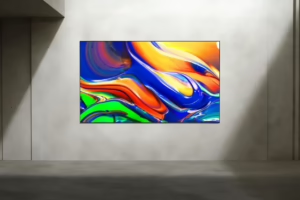The Elec has caught wind of Samsung’s evolving definition of MicroLED. When I started this gig, I had to learn a bunch of stuff, and one thing that I learnt was, MicroLED is something to do with self-emissive displays distinguishing it from LCD technology that relies on an external light source. However, Samsung is expanding this definition because, well, it can. For instance, its new RGB Micro LED TV uses a conventional LCD panel with color filters, but it uses micro-sized RGB LEDs in the backlight. These tiny LEDs, typically under 100 micrometers, are designed to emit pure red, green, and blue light, supposedly offering improved color accuracy and contrast compared to traditional white LED backlights.
By using, let’s call them, micro LED elements in its backlight, Samsung is blurring the lines between what is considered a true MicroLED display and an upgraded mini LED-LCD product. Samsung’s approach suggests that the benefits of micro LED—such as refined color reproduction and superior local dimming—can be integrated into existing LCD frameworks. The result is a shift in how consumers and the industry perceive the term micro LED/micro-LED/MicroLED products labeled as such. Meaning, they may not necessarily be self-emissive.
So, on the one hand, Samsung’s micro LEDs are giving it a shot at competing with large mini LED TVs from the likes of Hisense and TCL, while at the same time differentiating the product as if it is somehow next gen display technology. Will consumers be confused? Probably. It all sounds like a load of crap thought up in an insular marketing department with not much thought for how this will upset the LED aficionados at the next SID get together and who knows what happens to every MicroLED conference and event going forward. Do they let in the MiniLED guys? Do they measure LEDs at the door?
On the plus side, MicroLED companies that are struggling with their technology in mainstream markets will probably find the confusion to their benefit. Size matters, and in this case, the smaller, the better?

